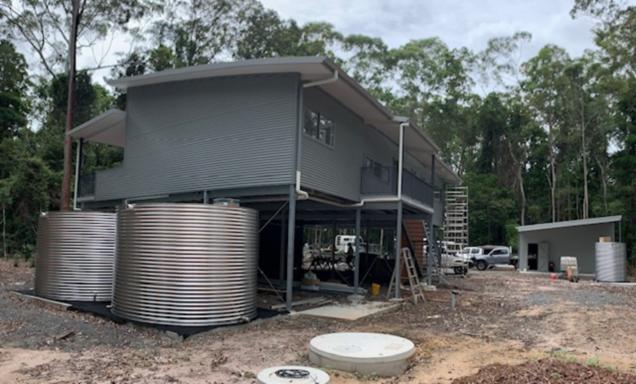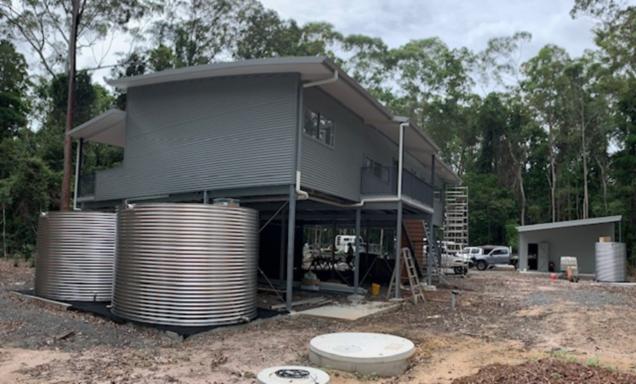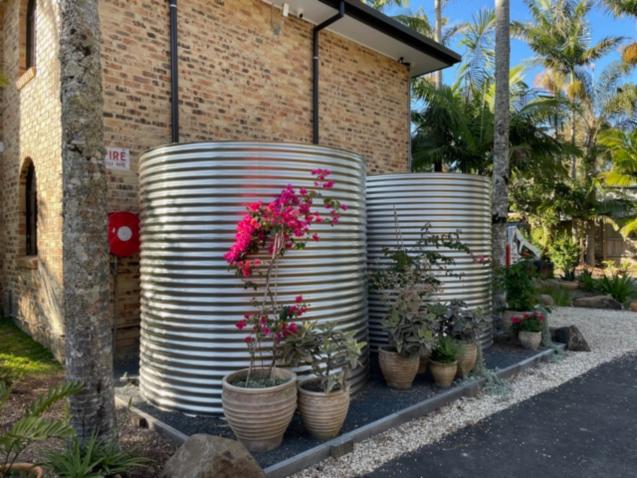
Brisbane Trying Hard to become a Water Sustainable City
By Select Water Tanks|August 24, 2021
Over the past 20 years the Brisbane City Council (BCC) has introduced a number of plans and/or strategies to attempt to turn it into a leading ‘water-sustainable city’.
For example, the BCC produced their first integrated water strategy in 2005. This has since been superseded by the WaterSmart Strategy published in 2010. Then in 2017 the BCC produced their latest attempt called: Brisbane. Clean, Green and Sustainable 2017-2031.
Along the way the BCC joined the Cooperative Research Centre (CRC) - Water Sensitive Cities where over 80 cities are looking for practical and innovative ways to make cites more water sensitive. Consequentially the BCC is using the Norman Creek Catchment Area as a whole of catchment flood strategy example, where they are focusing on local retention of stormwater and safe passage for that overflow stormwater where needed.
One of the core ingredients of all these plans and strategies by the BCC is the requirement to harvest and retain stormwater though the use of water tanks. In each plan/strategy they give a range of reasons why this is so important to install a water tank. For example:
In 2013, the Queensland Government abolished the law that made it compulsory for all new dwellings to install water tanks. Under pressure from the housing industry, the Government was convinced that it would decrease the price of a new dwelling by $6000 if they didn’t include a water tank. They claimed that it was an unnecessary expense and unfortunately it sent a message to the public that the Government did not think water preservation was important.
Not only is that figure a gross over estimation of the cost of a water tank, it also doesn’t address the issues of: Access to water in severe droughts, bushfire protection, water sustainability and taking pressure off water-related infrastructure. Nor does it encourage people to become more water conscious.
In contrast, other State Governments have a range of policies that reward homeowners for installing rainwater tanks. The New South Wales (NSW) Government for example, have mandated that all new dwellings in NSW that require a BASIX Certificate must include a water tank in their design. They give detailed specifications depending on size, shape or type of building, to help developers and home owners work out what is needed by them to meet the mandated requirements. This extends to more specifications for dwellings in bushfire prone areas.
Policies like this focus on requiring water tanks to be built into new dwellings but it would also be important if existing homeowners were also encouraged to retrofit water tanks into existing dwellings.
Luckily companies like Select Water Tanks are able to custom-make either Stainless Steel or Aquaplate/Colorbond round or slimline water tanks, to a size that fits exactly into the space(s) available.
The rainfall is Brisbane is conducive to collecting it via a catchment area such as a roof and directing it via gutters and pipes into a rainwater storage tank where it can be drawn off as needed.
So, the BCC should be congratulated for their water-sustainable policies and practices. Because Brisbane is conducive to the harvesting of rainwater, the BCC could do more to extend their own policies and practices to reward people for installing rainwater tanks and also approach the Queensland Government to review their policy against the mandating of water tanks in new dwellings as is done in NSW.
For example, the BCC produced their first integrated water strategy in 2005. This has since been superseded by the WaterSmart Strategy published in 2010. Then in 2017 the BCC produced their latest attempt called: Brisbane. Clean, Green and Sustainable 2017-2031.
Along the way the BCC joined the Cooperative Research Centre (CRC) - Water Sensitive Cities where over 80 cities are looking for practical and innovative ways to make cites more water sensitive. Consequentially the BCC is using the Norman Creek Catchment Area as a whole of catchment flood strategy example, where they are focusing on local retention of stormwater and safe passage for that overflow stormwater where needed.
One of the core ingredients of all these plans and strategies by the BCC is the requirement to harvest and retain stormwater though the use of water tanks. In each plan/strategy they give a range of reasons why this is so important to install a water tank. For example:
- To reduce our dependence on the local water supply
- To reduce our water bills
- To ease the burden on water infrastructure such as dams and pipeworks
- To provide a supply of water during droughts and bushfires
In 2013, the Queensland Government abolished the law that made it compulsory for all new dwellings to install water tanks. Under pressure from the housing industry, the Government was convinced that it would decrease the price of a new dwelling by $6000 if they didn’t include a water tank. They claimed that it was an unnecessary expense and unfortunately it sent a message to the public that the Government did not think water preservation was important.
Not only is that figure a gross over estimation of the cost of a water tank, it also doesn’t address the issues of: Access to water in severe droughts, bushfire protection, water sustainability and taking pressure off water-related infrastructure. Nor does it encourage people to become more water conscious.
In contrast, other State Governments have a range of policies that reward homeowners for installing rainwater tanks. The New South Wales (NSW) Government for example, have mandated that all new dwellings in NSW that require a BASIX Certificate must include a water tank in their design. They give detailed specifications depending on size, shape or type of building, to help developers and home owners work out what is needed by them to meet the mandated requirements. This extends to more specifications for dwellings in bushfire prone areas.
Policies like this focus on requiring water tanks to be built into new dwellings but it would also be important if existing homeowners were also encouraged to retrofit water tanks into existing dwellings.
Luckily companies like Select Water Tanks are able to custom-make either Stainless Steel or Aquaplate/Colorbond round or slimline water tanks, to a size that fits exactly into the space(s) available.
The rainfall is Brisbane is conducive to collecting it via a catchment area such as a roof and directing it via gutters and pipes into a rainwater storage tank where it can be drawn off as needed.
So, the BCC should be congratulated for their water-sustainable policies and practices. Because Brisbane is conducive to the harvesting of rainwater, the BCC could do more to extend their own policies and practices to reward people for installing rainwater tanks and also approach the Queensland Government to review their policy against the mandating of water tanks in new dwellings as is done in NSW.



